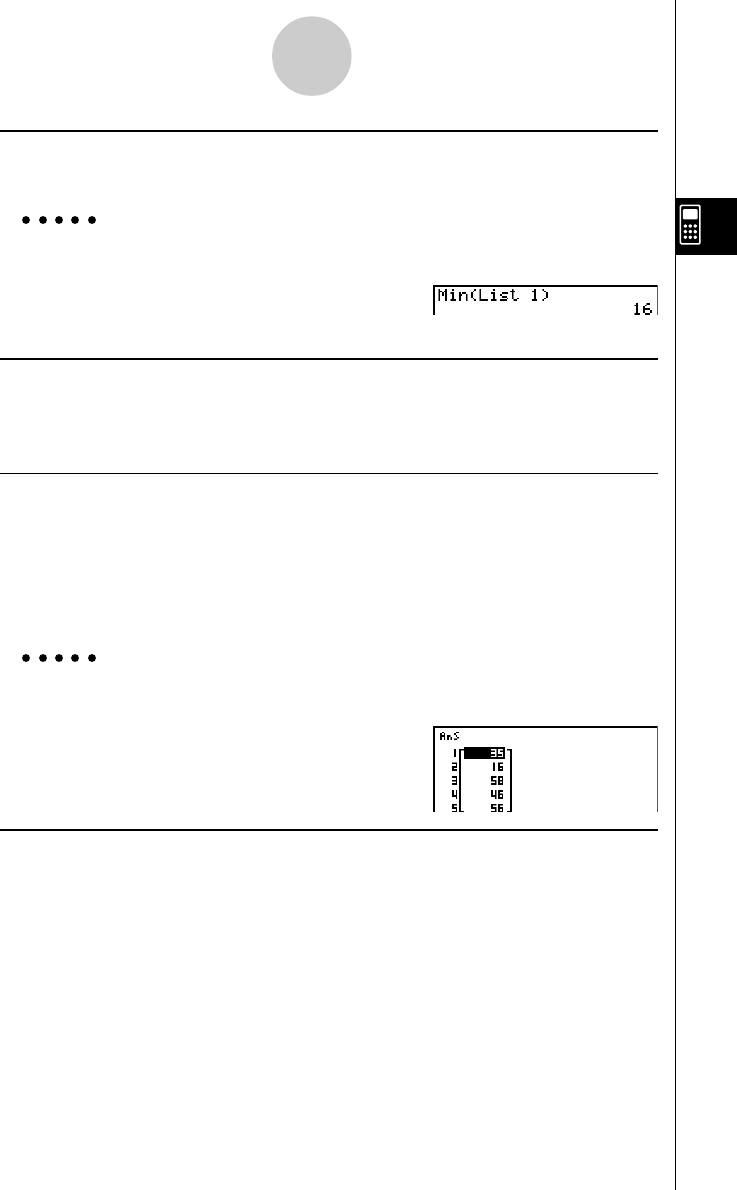
20050401
3-2-4
Manipulating List Data
u To find the minimum value in a list [OPTN]-[LIST]-[Min]
K1(LIST)6(g)1(Min)6(g)6(g)1(List) <list number 1-26> )w
Example To find the minimum value in List 1 (36, 16, 58, 46, 56)
AK1(LIST)6(g)1(Min)
6(g)6(g)1(List)b)w
u To find the maximum value in a list [OPTN]-[LIST]-[Max]
Use the same procedure as when finding the minimum value (Min), except press
6(g)2(Max) in place of 6(g)1(Min).
u To find which of two lists contains the smallest value [OPTN]-[LIST]-[Min]
K1(LIST)6(g)1(Min)6(g)6(g)1(List) <list number 1-26>
,1(List) <list number 1-26>)w
• The two lists must contain the same number of data items. If they don’t, an error occurs.
• The result of this operation is stored in ListAns Memory.
Example To find whether List 1 (75, 16, 98, 46, 56) or List 2 (35, 59, 58, 72, 67)
contains the smallest value
K1(LIST)6(g)1(Min)
6(g)6(g)1(List)b,
1(List)c)w
u To find which of two lists contains the greatest value [OPTN]-[LIST]-[Max]
Use the same procedure as that for the smallest value, except press 6(g)2(Max) in
place of 6(g)1(Min).
• The two lists must contain the same number of data items. If they don’t, an error
occurs.
• The result of this operation is stored in ListAns Memory.


















